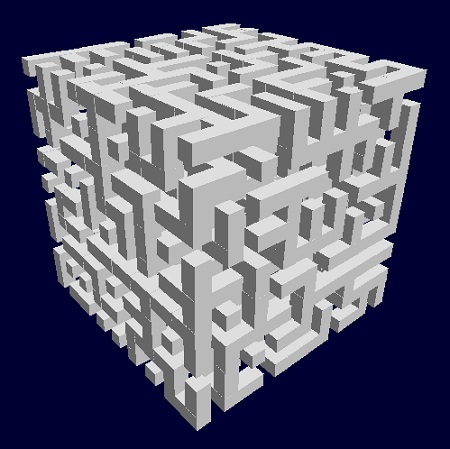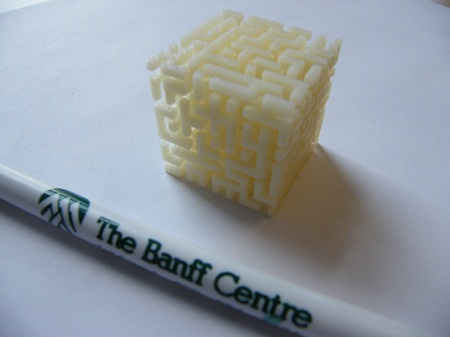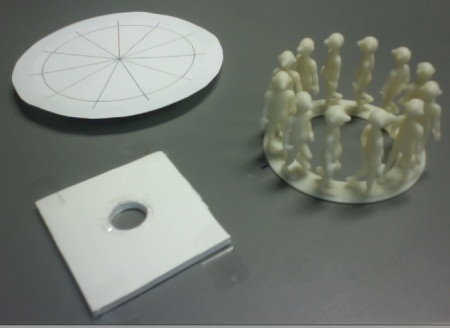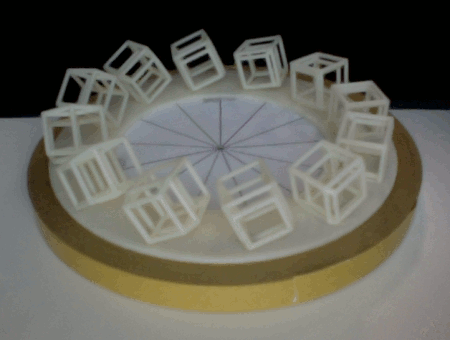I was having dinner with some good friends this evening, and the subject came up of the question of the “artist” mindset versus the “scientist” mindset. Questions from that discussion are still rattling around in my head.
I’ll just say, right at the outset, that I don’t believe there are two different subspecies of human that can be labeled “artist” or “scientist”. Rather, such identities are part of a dialectic that operates within every individual mind. When you are thinking like a scientist, you are concerned with mechanism: “How does this work? What are the operating principles here? What do I need to build to get from here to there?”
In contrast, when you are thinking like an artist, you are focusing on the deeper meaning itself, and the mechanism is merely a tool to get you there.
The myth that the “artist” and “scientist” are different people is quite prevalent in our society. So much so, that many people are surprised when the myth is questioned. There are many social structures that reinforce this myth. Children are told, from the time they are little, that they need to self-define with a narrow identity. Academic and professional societies are structured in a way that forces a “scientist” to act in a particular way, and punishes professional behavior that seems too “artistic”. Science is not supposed to ask “why”. Yes, an individual scientist can be socially responsible — this is actually encouraged. But this concern with outcomes is not considered part of the process of science itself.
Similarly, to succeed in the art world, one needs not to be seen focusing on the means by which things are done, but rather on the larger purposes and meaning. Starting in the second half of the twentieth century, Clement Greenberg and other influential voices in the art world called upon a renunciation of “mere technique”, in favor of a concept of art that rises above technical means, and focuses rather on ideas expressed, independent of the means used to express those ideas.
And so art and science have formed themselves into two opposing ghettos, each trapped by its own self-imposed limitations.
In my view, “art” and “science” are really two sides of the same coin. Within any individual, the practice of each is impoverished without the practice of the other. Great artists tend to be inventors, and great scientists tend to be driven by a higher purpose that is somewhere on the spectrum from romantic to spiritual.
Frank Capra was constantly inventing new techniques on the set to express his films, which was not surprising, since he had a Ph.D. in Engineering. He self-defined primarily as an artist — which means he was more concerned with getting the shot, and capturing an emotion on film, than he was with how he got it done. Nonetheless, Capra was perfectly comfortable tapping into his scientist self to refine and improve upon the techniques of cinema. The artist within him did not squelch the scientist within him, and this was part of the reason for the great effectiveness of his films.
Albert Einstein and Richard Feynman, among other great physicists, were driven by a larger sense of purpose, of beauty, of intrinsic meaning in the universe around them. When they were identifying and communicating those ideals to others, they are being artists. When they are implementing those ideals by developing mathematical bridges to greater understanding of the workings of the Universe, they were being scientists.
Leonardo da Vinci was of course artist and scientist both, in a way that was so completely integrated that it is impossible to draw a line between those complementary aspects of his creative genius.
Wouldn’t it be wonderful if we had the courage to teach our children to follow in his footsteps?





